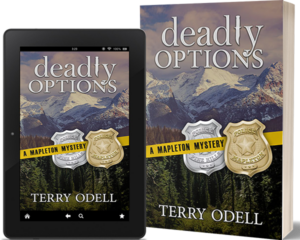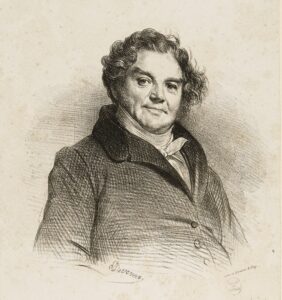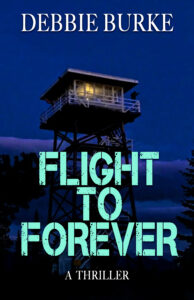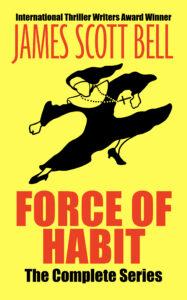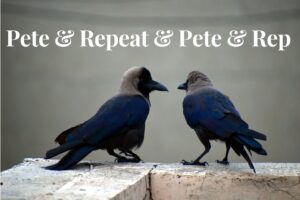Jim’s Reader Friday question got me thinking. What is the special sauce that ignites a writer’s brain? Would a new writer know when to run with an idea and when to let it go? Maybe. Maybe not.
With that in mind, I’ll share the following tips from critically acclaimed author and beloved writing instructor, Gary Provost. Incidentally, these tips can be used for fiction and nonfiction, if your nonfiction falls into the “story” category (i.e. true crime, historical, narrative nonfiction, etc).
Gary Provost created a simple paragraph to encapsulate the dramatic arc in a story.
Once upon a time… something happened to someone, and he decided that he would pursue a goal. So he devised a plan of action, and even though there were forces trying to stop him, he moved forward because there was a lot at stake. And just as things seemed as bad as they could get, he learned an important lesson, and when offered the prize he had sought so strenuously he had to decide whether or not to take it, and in making that decision he satisfied a need that had been created by something in his past.
This works because of its classic dramatic structure, which is the most satisfying type of story for the reader. It’s brilliant, if you take the time to dissect it. For now, I’d like to concentrate on a quick and dirty shortcut to test a story idea.
Gary Provost thought of stories in terms of a series of “buts.”
Joyce is a poor secretary, but she meets a millionaire and marries him.
She’s married to a millionaire, but the marriage goes sour.
She wants to end the marriage, but she (allegedly) thinks she’ll be left penniless.
She perhaps has a motive for murdering her husband, but so do other people.
After the murder, police suspect her, but she passes two polygraph exams at two different times and places. One, a highly regarded expert.
She passes the polygraphs, but the court rules they will not be allowed. But a federal court rules in a different case that the polygraphs can be allowed.
She goes back to court to get the polygraph tests allowed, but Judge Smith still will not allow them.
Someone claims to have heard shots at 3:30 A.M., but the medical examiner says that Stanley died around 5:30 A.M., consistent with Joyce’s story. She seems to be telling the truth, but it was five minutes from the time of the Colorado phone call to the call to 911.
Joyce allegedly says to Officer Catherine Parker, “I shouldn’t have done it,”but Parker never reports this.
Three days after the murder a cop tells the medical examiner that he saw signs of lividity, indicating that the body had been dead for a few hours.
But Wetli, the medical examiner, reviews his material, still comes to the same conclusion. Stays with that conclusion for three years.
No charges against Joyce, but the Miami Herald starts an anti-Joyce campaign, demanding that she be brought to justice.
Newscaster Gerri Helfman is about to get married, but her father is murdered.
No charges are brought against Joyce, but Stanley’s family pressures the state’s attorney’s office to come up with something.
And on and on it goes.
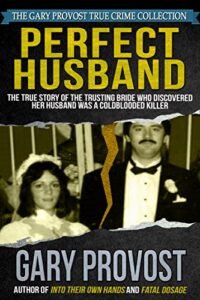 The above series of “buts” Provost used in a book proposal for a true crime book entitled Rich Blood. The proposal started a bidding war between publishers.
The above series of “buts” Provost used in a book proposal for a true crime book entitled Rich Blood. The proposal started a bidding war between publishers.
In the end, he decided to write Deadly Secrets instead. Turned out to be the right move because Deadly Secrets became the mega-hit Perfect Husband: True Story of the Trusting Bride Who Discovered Her Husband was a Coldblooded Killer.
Use a series of “buts” to test your story idea. Obviously, a “but” won’t fit every sentence. When it doesn’t, try “and then.” But a “but” should follow “and then” soon. Why? Because “buts” are complications. Complications = conflict. And conflict drives the story.
Example:
Husband kills wife, and then stuffs her body into a 3ml bag, and then drives to a secluded area to bury her, but his foldable spade isn’t in the backseat. Did the neighbor borrow it again?
When you write don’t keep all the “buts” and “and thens.” Think in those terms, but you don’t want all of them in the final draft. Over time your story sensibilities will automatically search for (nonfiction) and/or apply (fiction) this rhythm.
The point is, whether we write fiction or nonfiction, we need to find the story beneath the headline or first spark of an idea. Without a narrative driven by conflict, the story will fall flat.
Five pieces of wisdom from Gary Provost’s 100 Ways to Improve Your Writing.
- A writer’s most important vocabulary is the one he or she already has.
Learning new words is much less important than learning to use the words you already know. Think about your ideal reader. If he or she wouldn’t understand your word choice, you might as well be writing in a foreign language. Over time finding the right word becomes easier, almost a subconscious act. Until then, be intentional with every word.
- A lead should have energy, excitement, an implicit promise that something is going to happen or that some interesting information will be revealed.
Whether a lead is the first sentence, the first paragraph, or even the first several paragraphs of your story, it should pique a reader’s interest by raising story questions and give readers someone (or something) to care about before delving into the backstory.
Act first, explain later.
—James Scott Bell
A strong lead delivers on the promise it makes.
- When writing a beginning, remove every sentence until you come to one you cannot do without.
Meaning, make your point by answering “who, what, when, where” in the first paragraph. Make the reader wait for “why.” Unless, of course, the why is the character’s goal.
A topic sentence contains the thought that is developed throughout the rest of the paragraph. The topic sentence is commonly the first sentence in a paragraph. For each paragraph ask, “What do I want to say here? What point do I want to make? What question do I want to present?” Answer with a single general sentence.
When you edit, ask how each sentence works for the paragraph. Ask why it’s there. Does it have a purpose? Great! Then keep it. If you can’t pinpoint why you included that sentence, hit DELETE.
- Style is form, not content.
In writing, the word style means how an idea is expressed, not the idea itself.
A reader usually picks up a story because of content but too often puts it down because of style.
- To write is to create music.
The words you write make sounds, and when those sounds are in harmony, the writing will work.
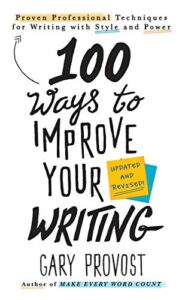
Gary Provost was highly regarded as an author, sought-after speaker, consultant, and celebrity biographer.
“The writers’ writer” authored thousands of articles, columns, and dozens of books covering most every genre. His highly acclaimed Writers Retreat Workshop, and video and audio courses remain available through writersretreatworkshop.com.
What’s your favorite piece of advice here? Care to add a tip?



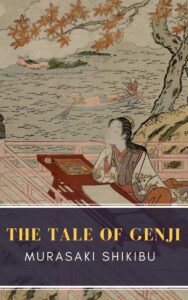
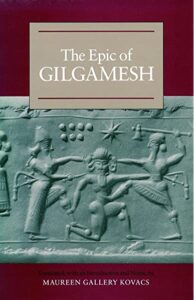

 “If you don’t know about Nigerian scams, then you’ve probably never used the internet. Seems like every couple weeks these West-African crooks drop me an email thinking I’m dumb enough to bite. Some people must, or the cons wouldn’t keep trying. So it was no surprise when I checked my inbox Tuesday morning and found another Nigerian grab at my wallet.
“If you don’t know about Nigerian scams, then you’ve probably never used the internet. Seems like every couple weeks these West-African crooks drop me an email thinking I’m dumb enough to bite. Some people must, or the cons wouldn’t keep trying. So it was no surprise when I checked my inbox Tuesday morning and found another Nigerian grab at my wallet.

 With an understanding of your agreement to confidentiality, my project involves a revised form of hyper-velocity, multi-directional transportation. The concept for analogous movement between distant portals, both historic and forthcoming, is nothing new. Space-time dilation based on the Einstein-Rosen bridge theory has been conceptualized for decades. Practical application of Faster-Than-Light (FTL) amplification was bottlenecked due to tachyon condensation which restricted Portal Entrance and Exit (PEE), but there’s now a clear and unique opportunity for a massive breakthrough.
With an understanding of your agreement to confidentiality, my project involves a revised form of hyper-velocity, multi-directional transportation. The concept for analogous movement between distant portals, both historic and forthcoming, is nothing new. Space-time dilation based on the Einstein-Rosen bridge theory has been conceptualized for decades. Practical application of Faster-Than-Light (FTL) amplification was bottlenecked due to tachyon condensation which restricted Portal Entrance and Exit (PEE), but there’s now a clear and unique opportunity for a massive breakthrough. I’m sure you’re familiar with the 1985 works of Professor Emeritus Dr. Emmett Brown and his DeLorean model. Unfortunately, it’s been three decades, going on four, since Doc vanished in a timely experiment. Although I patiently await his return, progress must move forward. With this, I’ve acquired Doc’s patent rights to the Flux Capacitor (FC) – the propulsion device central to warping the Space-Time Continuum (STC). Early technology restricted FC Input/Output (I/O) to 1.21 jigawatts, however… I’ve found a method of quadrupling I/O to 4.84 jigawatts, theoretically making the trip four times faster.
I’m sure you’re familiar with the 1985 works of Professor Emeritus Dr. Emmett Brown and his DeLorean model. Unfortunately, it’s been three decades, going on four, since Doc vanished in a timely experiment. Although I patiently await his return, progress must move forward. With this, I’ve acquired Doc’s patent rights to the Flux Capacitor (FC) – the propulsion device central to warping the Space-Time Continuum (STC). Early technology restricted FC Input/Output (I/O) to 1.21 jigawatts, however… I’ve found a method of quadrupling I/O to 4.84 jigawatts, theoretically making the trip four times faster. Compounding the situation is the original 1.21 jigawatt FC only required an 88 mph ERV. With a four-times capacity 4.84 jigawatt FC, it’s boosted the ERV to 352 mph. I realized… Great Scott! That’s a lot of ground speed. Fortunately, I’ve identified the new Aston Martin AM RB-001 Valkyrie as the perfect design. Now—here’s where you come in.
Compounding the situation is the original 1.21 jigawatt FC only required an 88 mph ERV. With a four-times capacity 4.84 jigawatt FC, it’s boosted the ERV to 352 mph. I realized… Great Scott! That’s a lot of ground speed. Fortunately, I’ve identified the new Aston Martin AM RB-001 Valkyrie as the perfect design. Now—here’s where you come in. Appreciatively, I’m accepting your group’s investment of $3.12 million USD. This covers the Valkyrie purchase, shipping, and handling. Please make an immediate monetary transfer via Western Union for deposit into my account #6105-883-464-0901 at Nanaimo, British Columbia, Canada. In lieu of cash, your direct purchase of the AM RB-001 PEE Valkyrie can be delivered to my Vancouver Island R&D facility.
Appreciatively, I’m accepting your group’s investment of $3.12 million USD. This covers the Valkyrie purchase, shipping, and handling. Please make an immediate monetary transfer via Western Union for deposit into my account #6105-883-464-0901 at Nanaimo, British Columbia, Canada. In lieu of cash, your direct purchase of the AM RB-001 PEE Valkyrie can be delivered to my Vancouver Island R&D facility.
